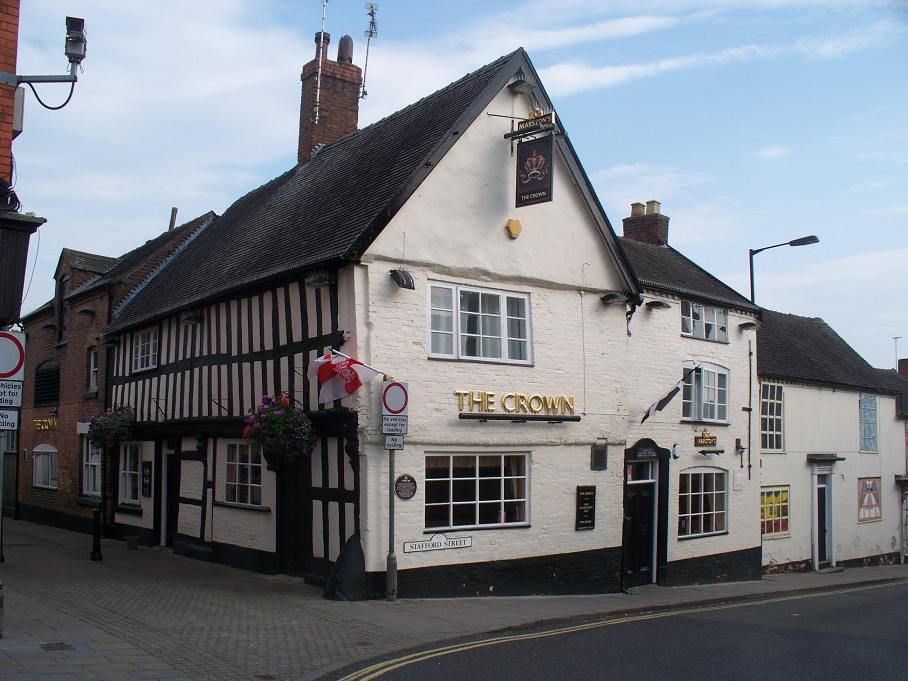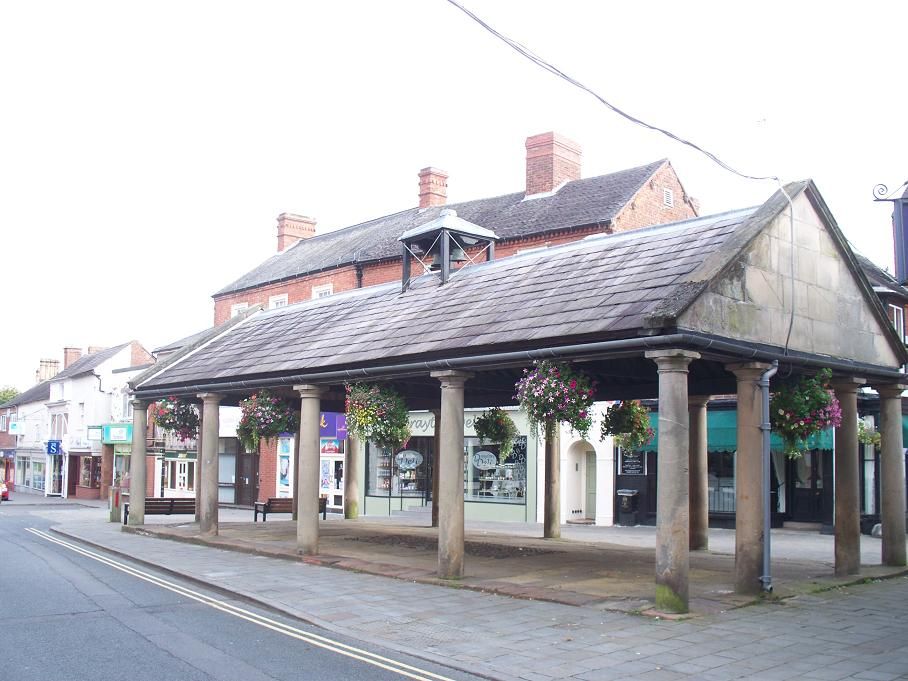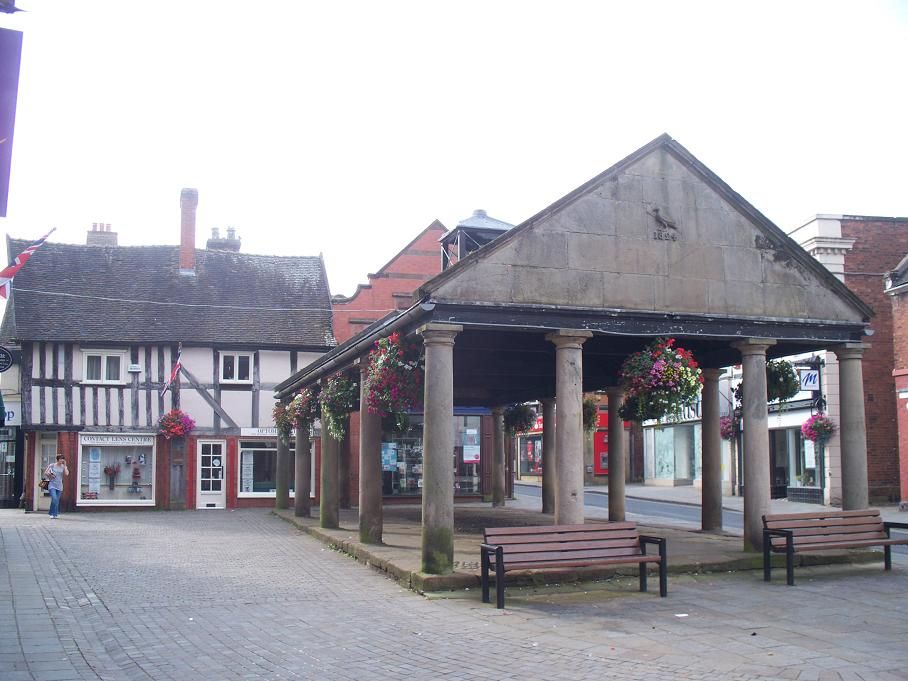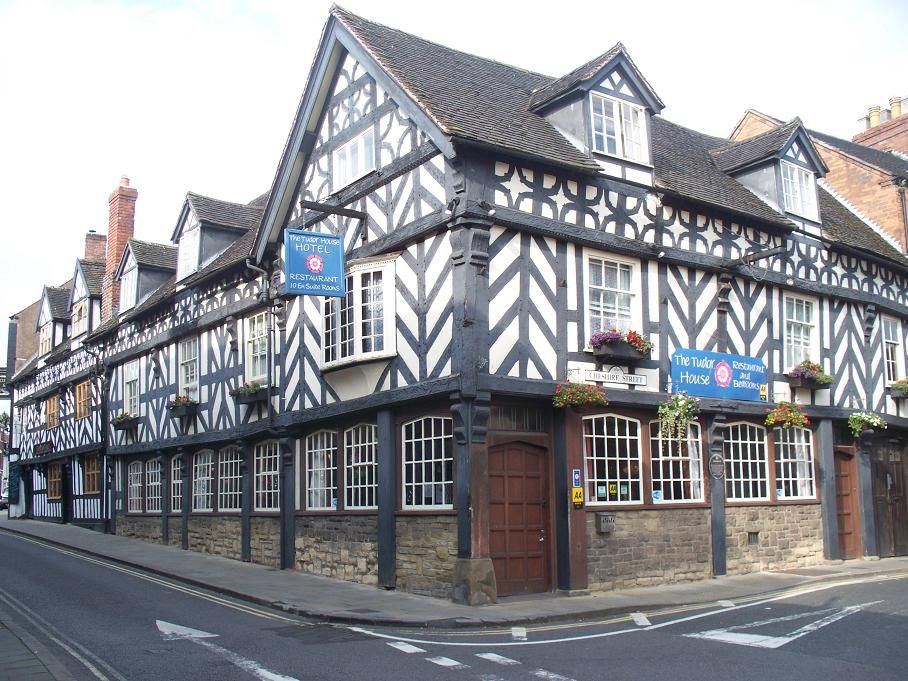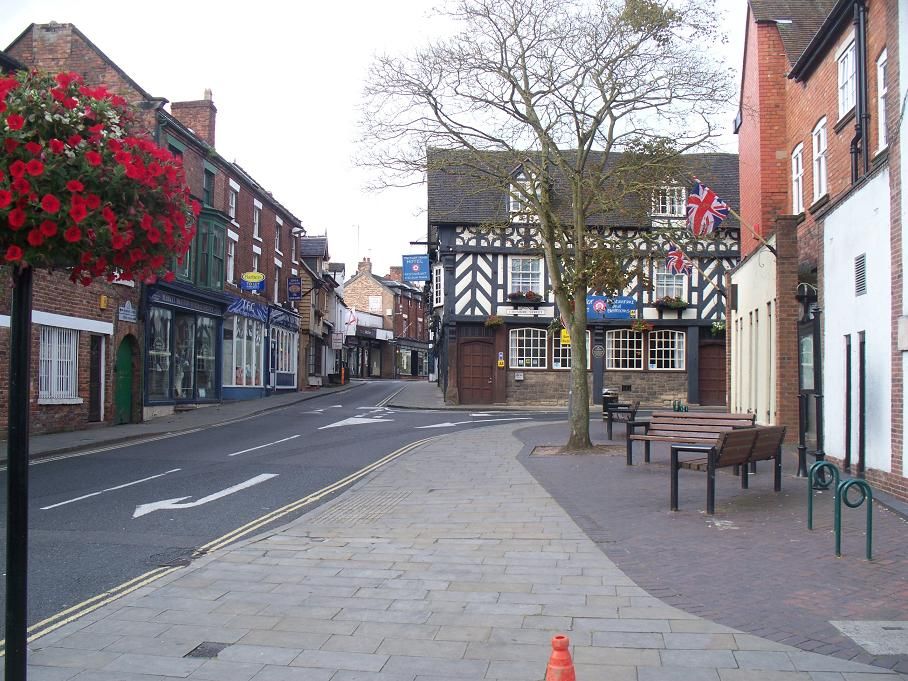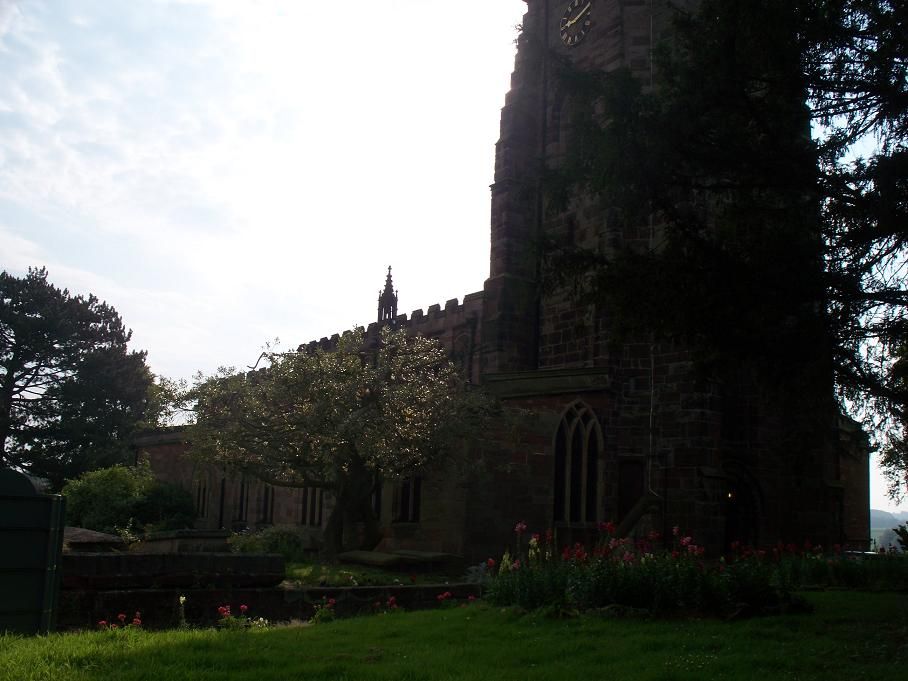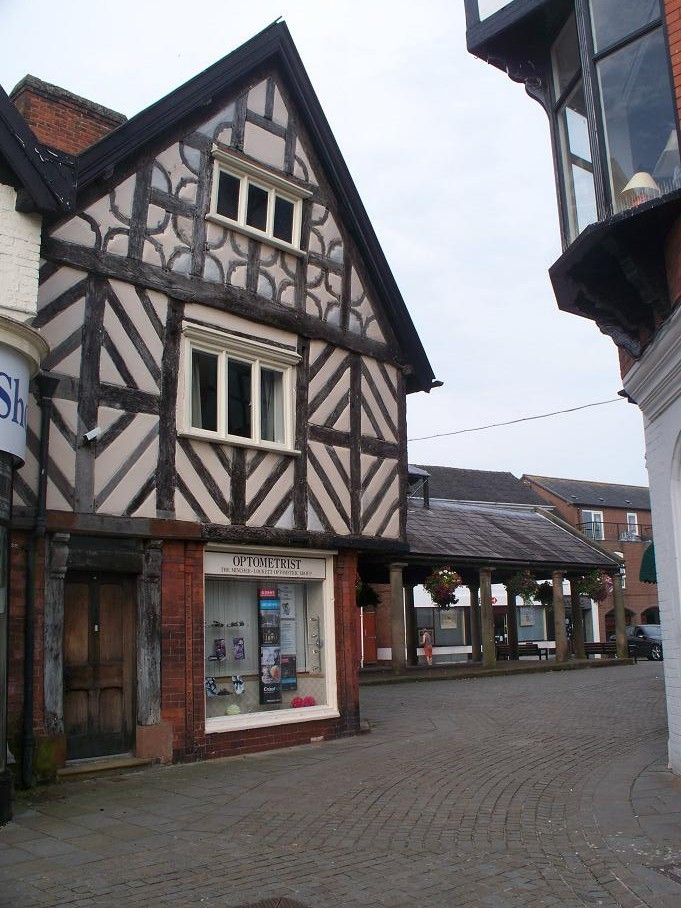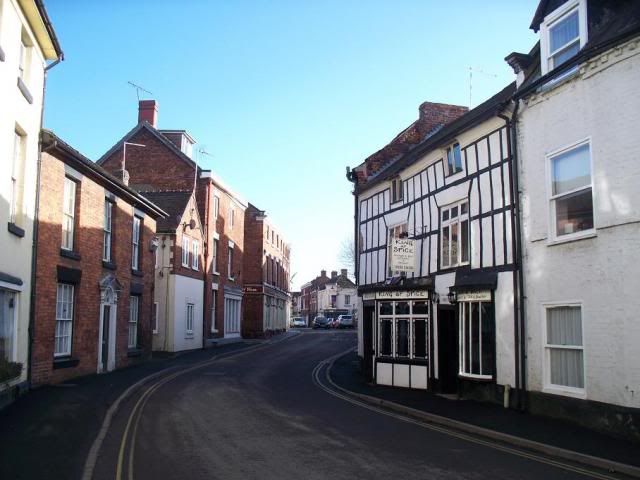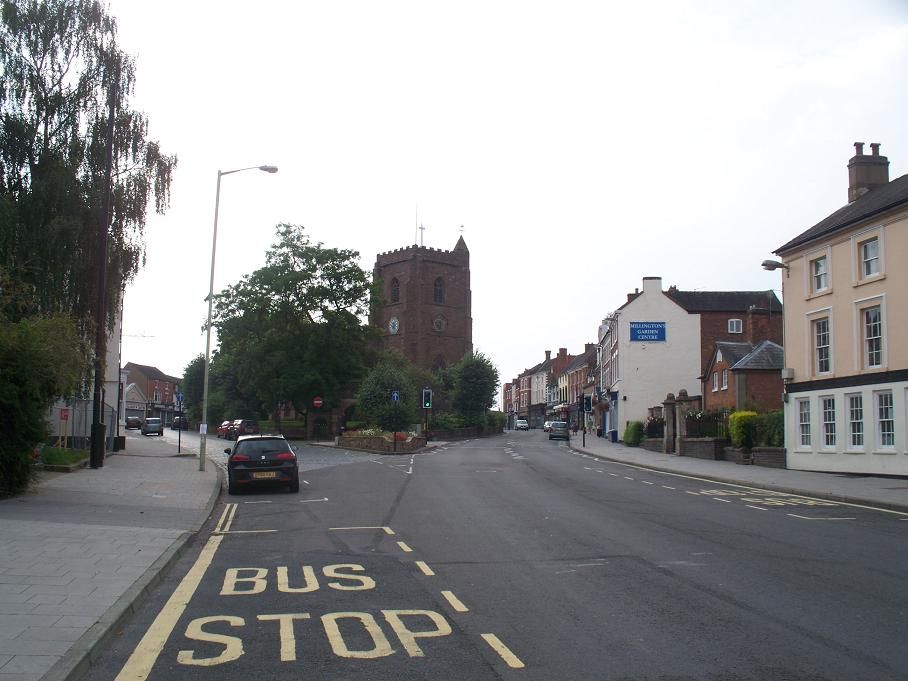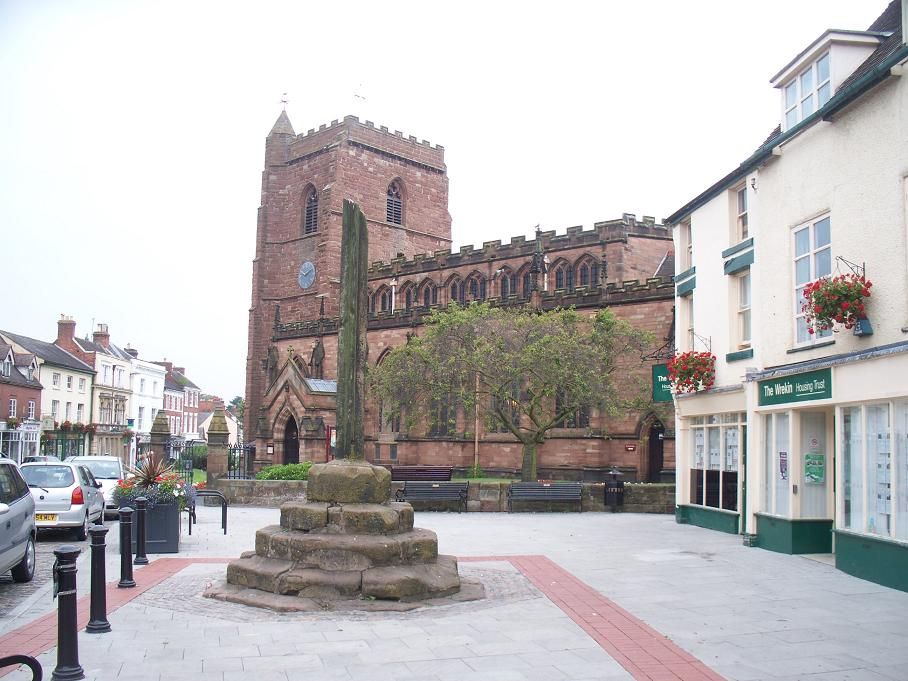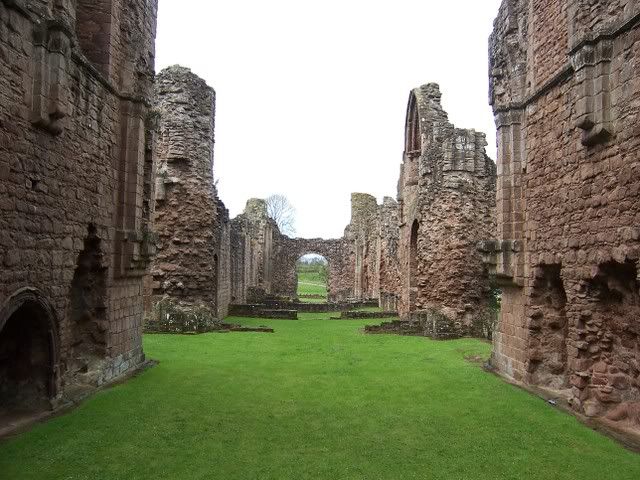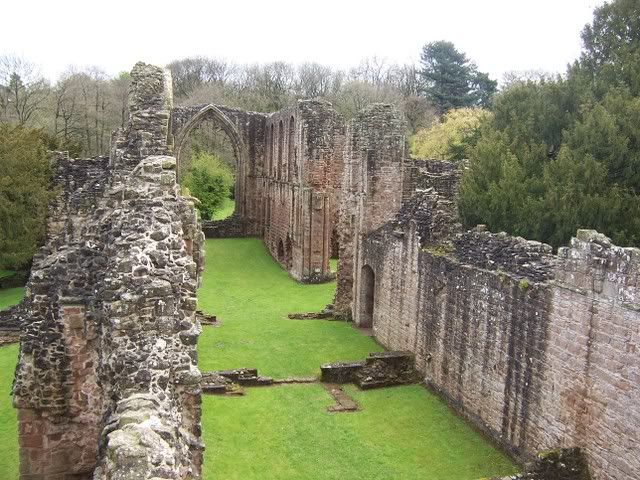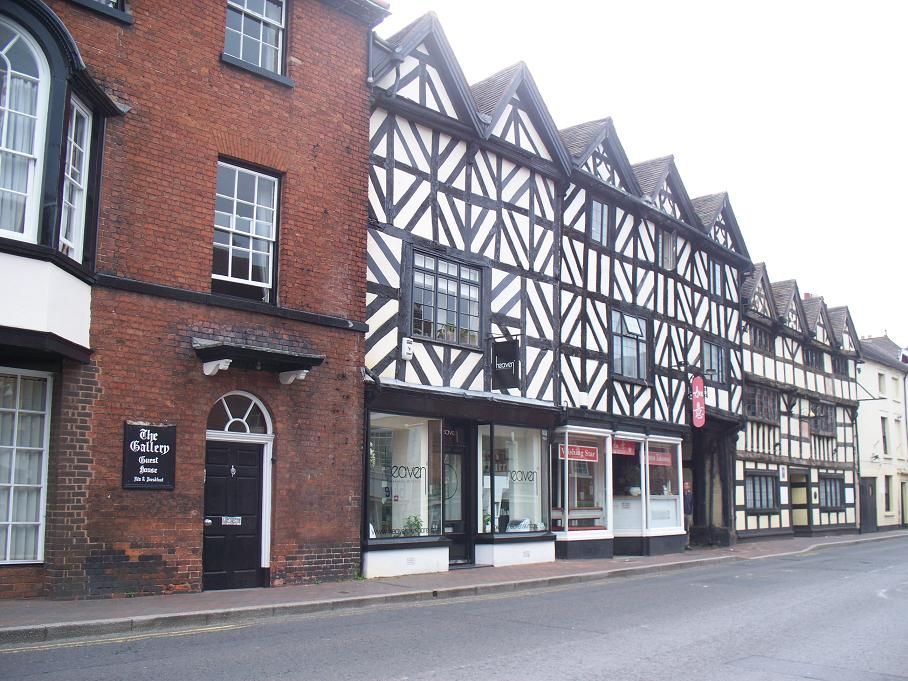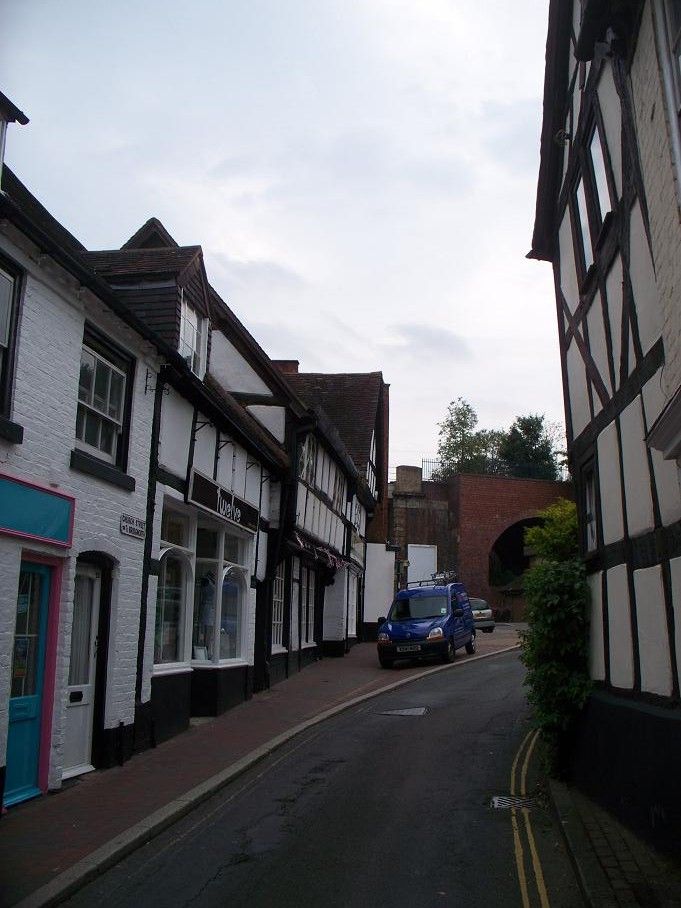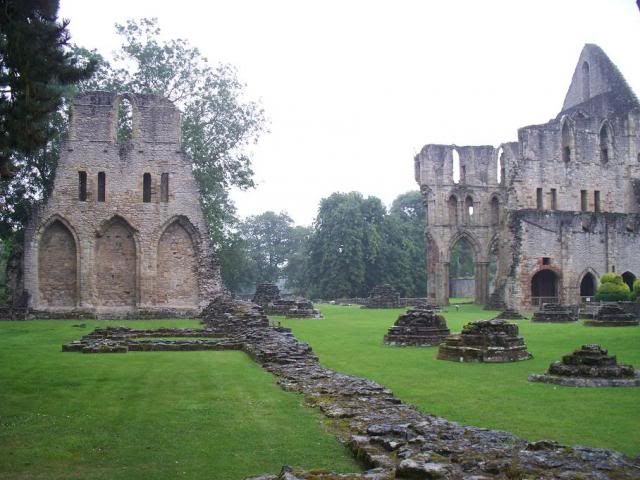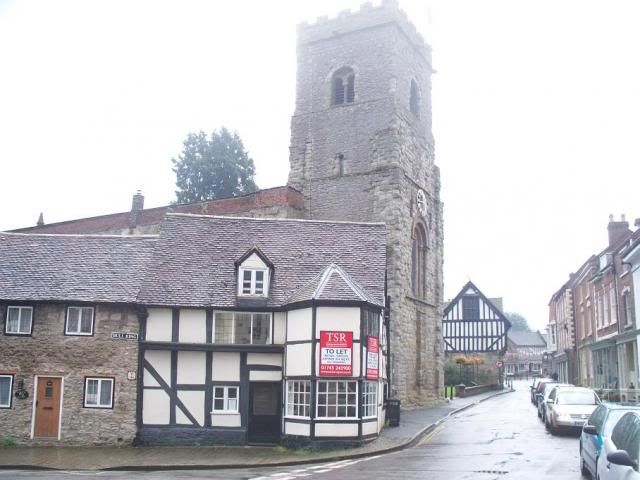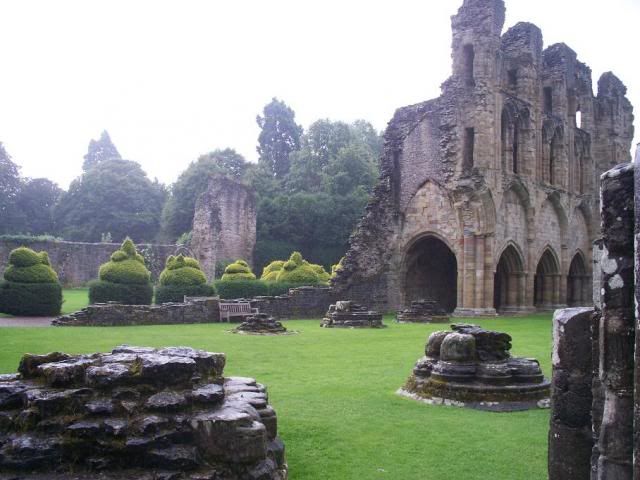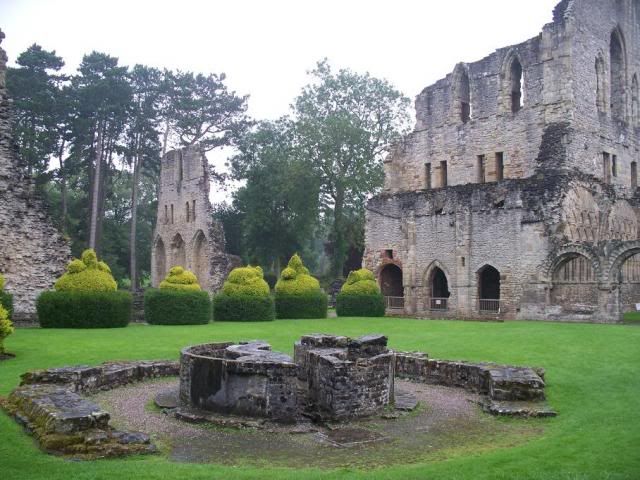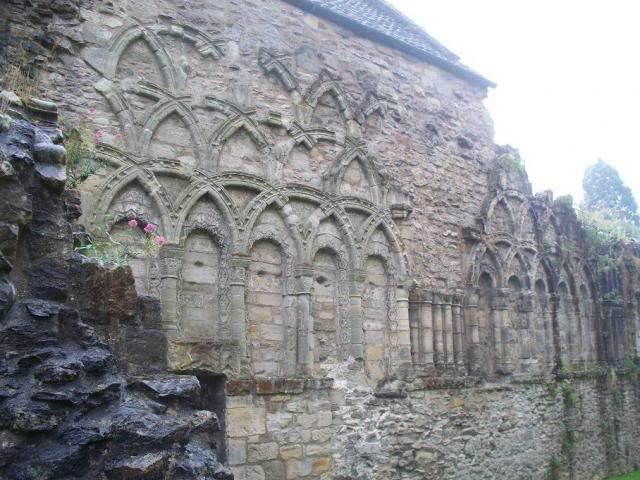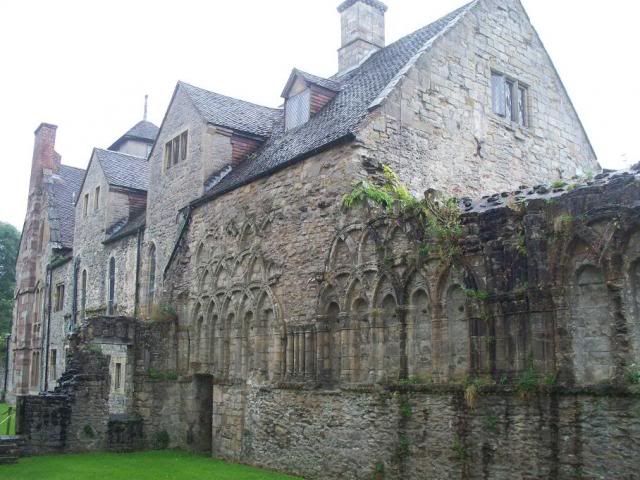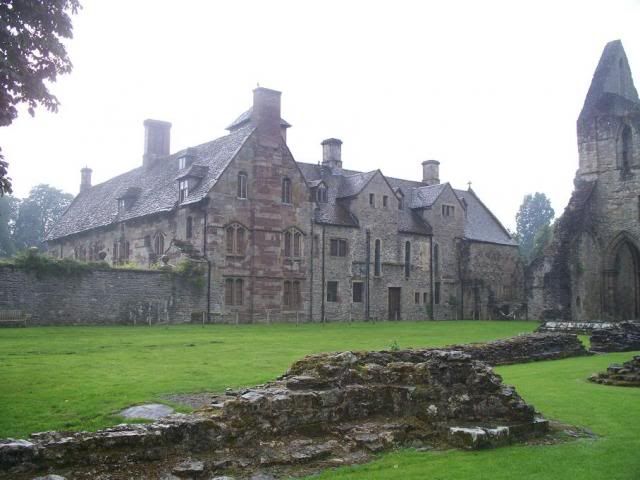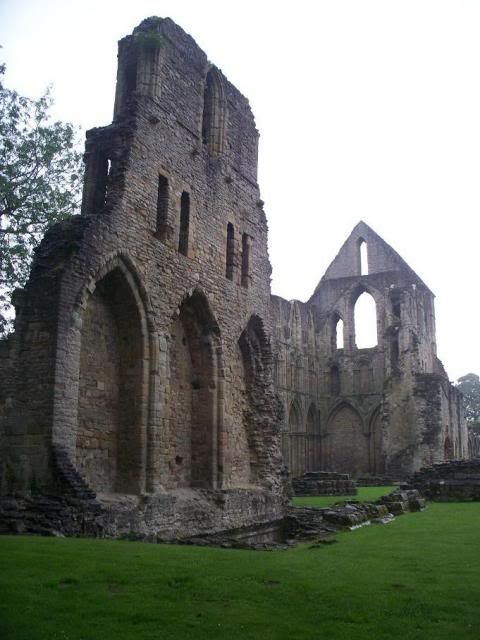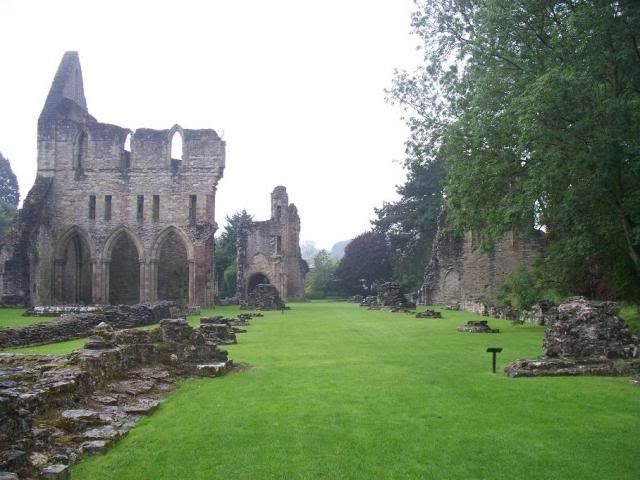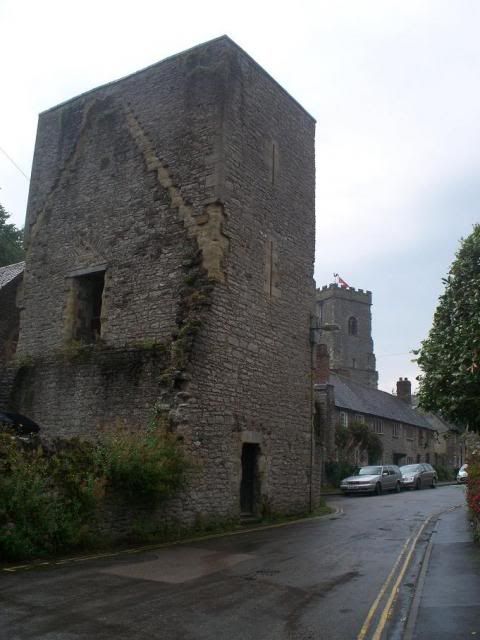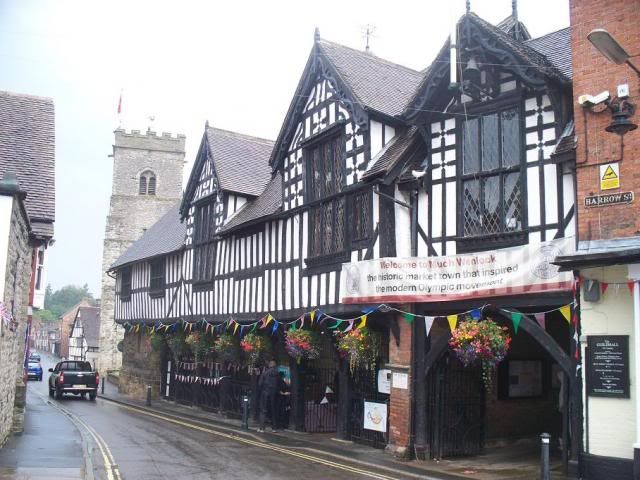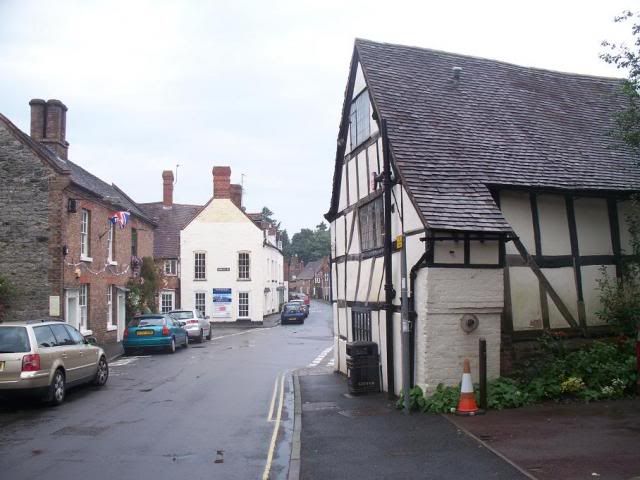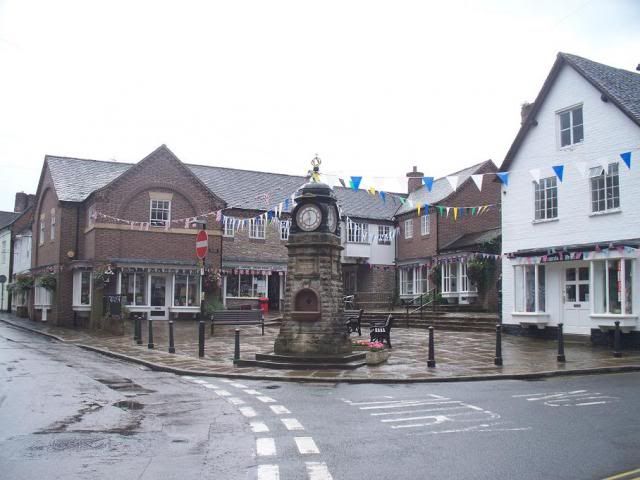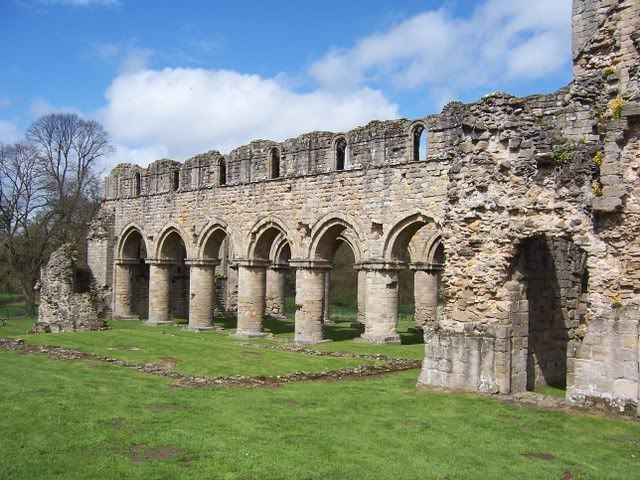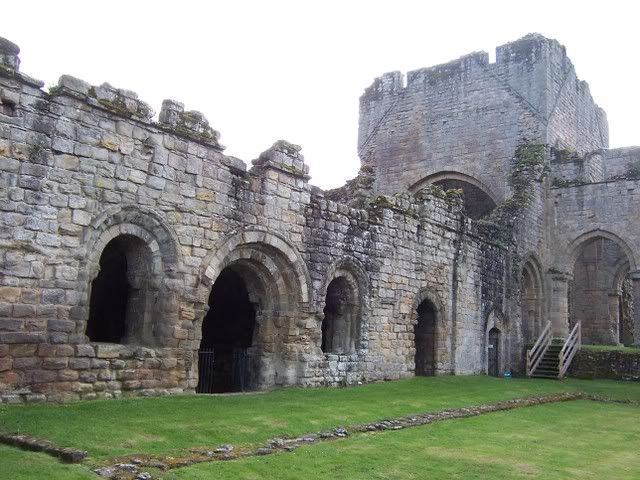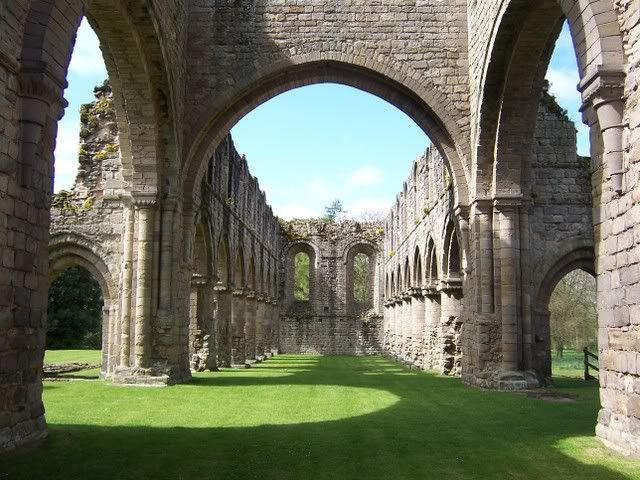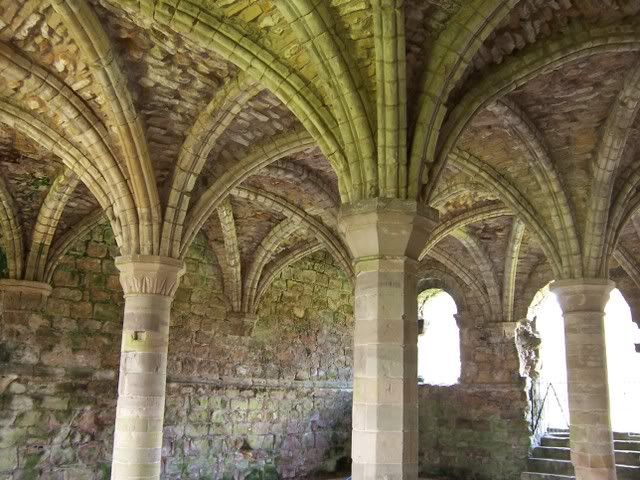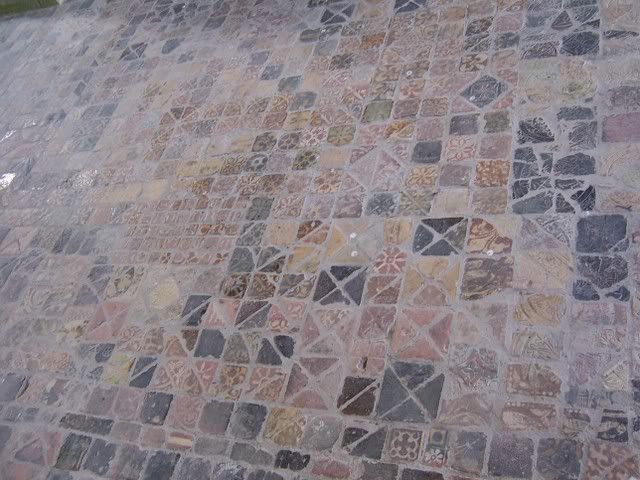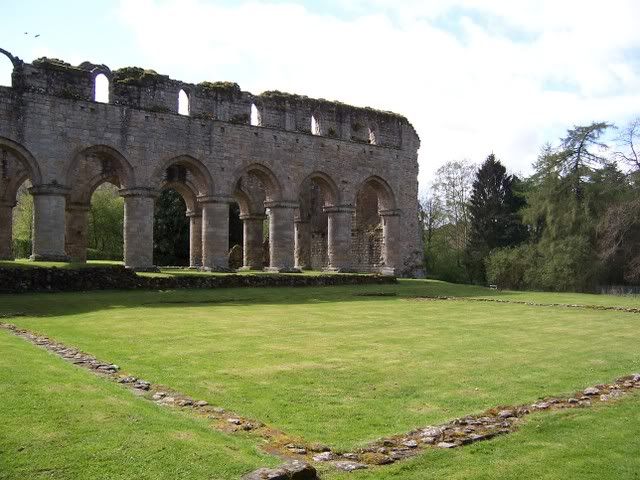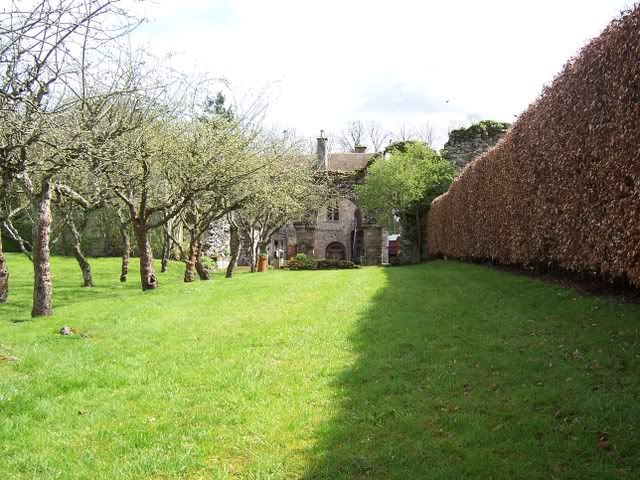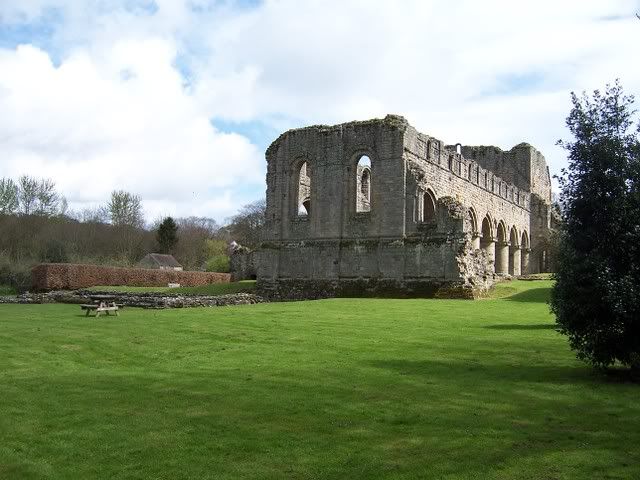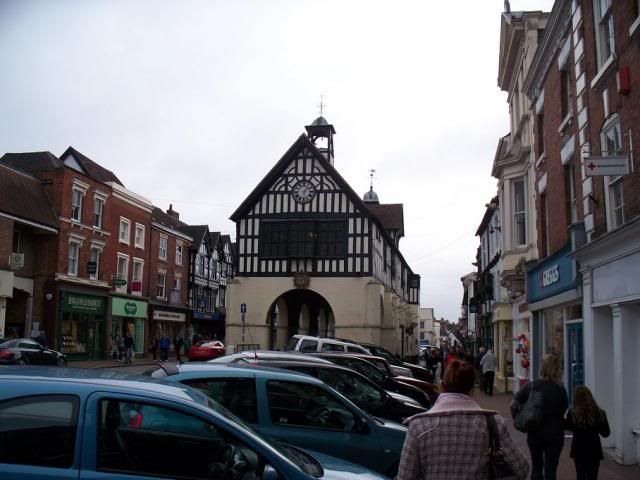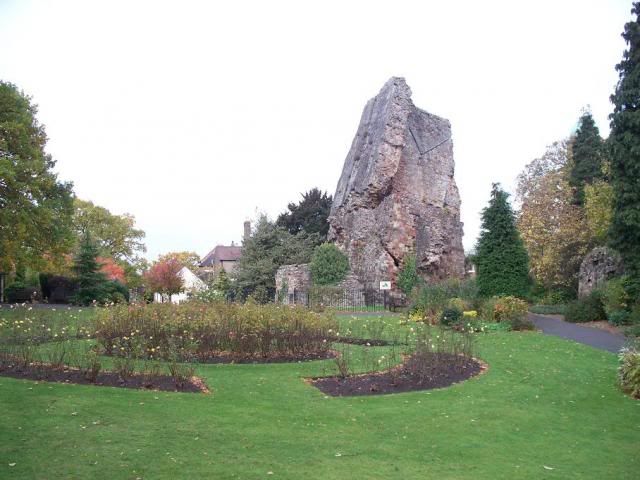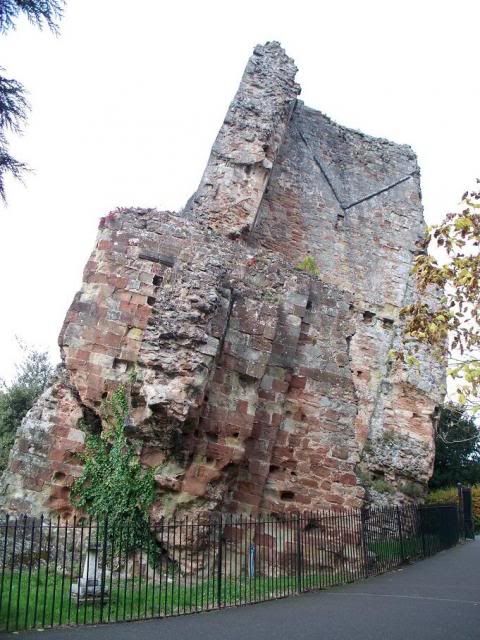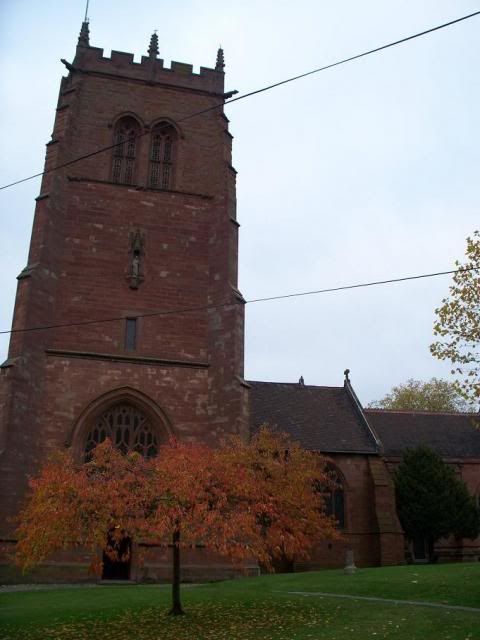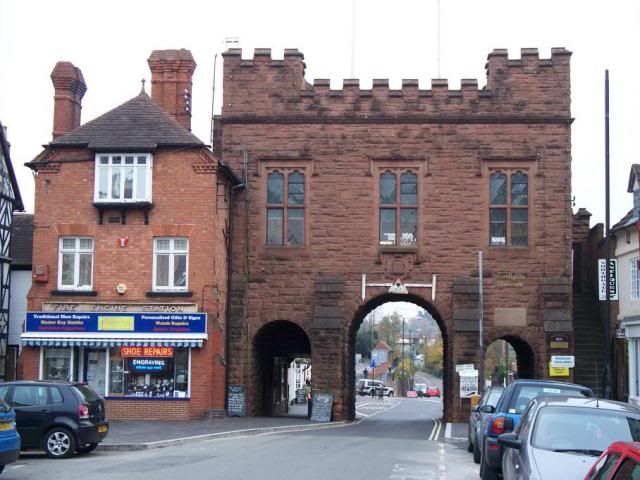Known as Draitune in the Domesday Book, where it was held by William Pantulf post-Conquest. William was one of the other William's Norman knights, and acted as one of Earl Roger's sheriffs, being given extensive lands throughout this region of the county (Hodney Hundred), and the title of Lord of Wem. We're told that Draitune/Drayton had land for 8 ploughs, including 1 plough held in demesne - that is, land worked by the tenants for the lord's profit and not their own. Pre-Conquest the land was worth 20s, but is valued in the Domesday survey at 10s. This shows the extent to which the land of northern Shropshire was devastated by the attacks, particularly from Welshmen in these early years, when rebellion swept the borderlands all the way to Stafford, before being ruthlessly put down by Earl Roger. That the land had halved its productive value is really quite dramatic, but also fairly typical of a lot of this area (remember nearby Nantwich, whose 8 saltpans pre-Conquest were reduced to just 1 by the time of the Domesday survey?)
Market Drayton was a prosperous market town, and also like Nantwich, suffered a cataclysmic fire that swept away a great number of the old buildings. The fire, which swept through in 1651, didn't destroy everything though, and The Crown is a rare survivor:
Charles I is believed to have stayed here during the Civil War, though he appears to have stayed in every public house constructed prior to 1649. Certainly, the area would have been a hotbed for activity (Shropshire had declared for the King, and the Parliamentarians were keen to break into the area). It would be very easy to imagine him here en route to Chester, or Shrewsbury, at any rate. Just around the corner from The Crown is the Butter Cross, surmounted with a bell that is meant to be rung should the town ever be the victim of fire again:
A butter cross is where dairy products were sold at the market held by a market-town, and is usually one of the sure signs that a market-town has had its charter since the middle ages. At its most basic, it provided a shelter from the sun, to prevent dairy products from spoiling, and it is usually found at the heart of the market-place. Market Drayton, you may have guessed from its name, has a strong relationship with the market, the charter for which was granted by Henry III in 1245. Market towns were an important part of the medieval economy, as all trade conducted therein was taxed (hence the need for a charter). In order to ensure a fair market, no other town within a day's travel could also hold a market (which is another relic of medieval England still in force today), though the town's council members, who are the dignitaries unto whom the charter is granted, can often allow a second market if they so wish. This usually had to be given Royal approval, however. As well as the butter cross, another sign of a medieval market town is the market cross - thought to promote honest trade through its presence. Nearby to the butter cross is the interestingly-named 'Cheshire Cheese Inn', latterly the 'Gingerbread Cafe', now an opticians, and seen below on the left:
It was the meeting place for a local forerunner of the modern police force, a group of folks who would meet to prosecute miscreants. Akin to London's Bow Street Runners, it wasn't until 1857 that the modern police force as we understand it today was required to be formed in every city. The Gingerbread Cafe was the birthplace of gingerbread, you may be interested to know. That is, the birthplace of gingerbread as a confectionery and not a remedy for indigestion - commercially available in the town since 1817, it is believed the original recipe contained rum, oddly. Just around the corner is Tudor House, a massive black-and-white building that was reconstructed following the great fire.
In front of Tudor House is a broad pathway where the former covered butchers' market used to be, the 'Shambles'. Yes, York isn't the only place in medieval England to have a Shambles! However, I don't think anyone could make a case that Market Drayton is more impressive than York...
Market Drayton was the birthplace of Robert Clive, better known as Clive of India, and mentioned in my previous Shropshire blog. Clive was educated at the grammar school here, where his initials carved into his school desk are still preserved. Like all such scamps, Clive is said to have climbed the tower of the local church, also.
Ah, boys will be boys, etc etc.
So let's have a look at some of the other market towns in the area. I mentioned William Pantulf was Lord of Wem, which was a prosperous little place at the time of the Domesday survey, and still retains some of its medieval character to this day, in the winding nature of its streets, and the fact that there are no major A-roads that will take you there, just twisting and winding country lanes.
Wem, or 'Weme' in the Domesday Book, takes its name from the Saxon word for 'marsh', although there is evidence that the area was settled long before that. The 1086 survey shows Wem to have been something of the Norman success-story: whereas most land in the area was, as I have described previously, laid waste or at least suffered grievous attacks during the counter-invasion following Hastings, and remained unproductive for years afterwards, William Pantulf seems to have made his lands in Wem turn a profit quite quickly. The survey tells us he found the land waste but, while in the time of Edward the Confessor it was only worth 27s, he had managed to make it worth 40s by the time the King's commissioners came calling. In addition to the usual information about manors (there were 4) and ploughs (there were 8), Wem also boasted a hawk's eyrie, and woodland enough to fatten 100 pigs. The presence of the eyrie suggests that this was the centre of William's activities when he was in the area, hawking being a popular pastime. Wem was given a market charter in 1202, held on a Thursday.
Wem has been famous since the nineteenth century as being the home of the sweet pea, being cultivated in the 1880s in the town by Henry Eckford. The town still identifies strongest with this moniker, although earlier in the century it was more famous for its pale ale than anything else. A fire in 1677 destroyed many of the older buildings, though there are one or two fine-looking structures still standing:
Newport is an interesting beast. It was founded by Henry I, and so does not appear in Domesday Book, but is very typical of Norman towns, planned along a single street with 'burgage plots' (that is, plots of land that burgesses, the townsfolk, rented from the King or local Lord) to either side. This plan stems back to the typical Norman motte-and-bailey castles, where a single street would run from the bailey gatehouse to the motte, and dwellings and other constructions would be found on either side. There is no such castle at Newport - being on the eastern edge of the Welsh March, it was not necessary to make the town a fortified one at this time - but the plan remains. A moated site has been found in the area, though this is more likely a moated manor house than an actual castle or similar fortification.
Markets have been held at Newport since Henry I founded the borough, and the town became very prosperous as a centre for the wool and leather trades, and is even given the right to provide fish to the King (this is more important than it sounds, as such rights give enormous prestige to the towns that have them, usually because other people will want what the King has - think of the brands today that carry "by royal appointment"). The butter cross, or Puleston Cross as it is known because of the inscription that dedicates it to the memory of Roger de Pyvelesdon, the Sheriff of Shropshire who fought in Edward I's wars in Wales and died in 1272, is believed to have stood in its original position possibly since 1280.
The cross denotes the original marketplace, which was replaced by a market hall in the mid-17th century, though this was demolished in the mid-19th century. The red stones in the above photo denote the outline of this hall (check this link for some interesting photos of the dig and of the old hall!) The town was victim of a fire in 1666 that destroyed many of the medieval features, however the timber-framed Guildhall (below) is a notable survivor.
From Newport, we begin to enter Shropshire Abbeys country, there being a great number of ruined monastic houses in the area. First on this list is Lilleshall Abbey.
Founded in 1148 as an Arrouasian house (a branch of the Augustinian Order) from Dorchester Abbey in Oxfordshire, the first such Arrouasian abbey in England, Lilleshall had quite the auspicious start when approval had to be sought - and was sought successfully - for the foundation of the abbey here from the Bishop of Lichfield and Coventry, King Stephen and Empress Matilda, the Pope and the Archbishop of Canterbury. The future Henry II, then Duke of Normandy, also gave his permission for the abbey to be built. Quite the staggering array, there. The founders, Philip of Tong and his brother Richard the Archbishop of Middlesex (and later Bishop of London), gave huge estates in Leicestershire to aid in its economy at these early days. It also derived an income from ownership of two mills, control of tolls over the Atcham Bridge, and owned property in Shrewsbury.
^ the south range from the southwest, the Chapter House is the open space on the right.
^ the Chapter House.
You'd think Lilleshall would the the medieval success, but by the fourteenth century the abbey was already in debt. Lilleshall monks had been over-selling corrodies, a medieval pension scheme where a lay person could give the abbey land or money in return for food, fuel and shelter until he died. Lilleshall's monks had gone very wrong.
^ the south range, from the southeast
Unlike the Cistercian model of employing lay brothers to do the menial repair work and day-to-day farming, Augustinian Canons kept servants and employed people to do work for them. This must also have acted as a drain on finances, keeping the abbey barely functional.
^ the abbey church.
By the time the King's Commissioners came a-calling in 1534, Lilleshall was valued at £232, allowing it to stay open for a time. There were just nine canons living here, but an astounding 43 servants, including a schoolmaster! Suppression came in 1538 however, with the abbot and nine canons being pensioned off, the abbot himself receiving a house in London for his trouble, and the estates sold to the Cavendish family.
^ quite unusually for an abbey nowadays, a spiral staircase survives in the west end to clerestory level, allowing for an aerial view of the abbey church!
Post-suppression, however, Lilleshall's history remains quite entertaining. During the Civil War, the abbey ruins were fortified for the King, and in 1645 actually managed to withstand a siege! Excavations have uncovered a possible hearth used to make lead shot, and the possible earthworks of the Parliamentarian siege lines. The Royalists lasted until the towers and north transept were destroyed. There is no mention of the abbey being slighted after the war, but merely being allowed to decay and crumble.
^ the excellent Processional doorway into the South Aisle from the cloister.
Coming into the realms of Telford, the next market town is Shifnal, or 'Iteshale' as Domesday Book knows it. Not quite the success story of Wem, Shifnal/Iteshale did survive the ravages of the post-Conquest insurrections and recovered to the extent that it was worth as much pre-Conquest as post. The manor was held by Robert fitzTheobald from Roger de Montgomerie, who held 9 ploughs, 26 slaves, 37 villans and 3 bordars. Interestingly, it is mentioned there were also 3 radman who had 27 ploughs. In the rough hierarchy of medieval society, a slave is basically what we understand the term to mean today - a person held in slavery to the lord of the manor, working for no pay but some sort of board and lodging. A bordar is next up, known also as a cottager, the term is roughly analogous to a crofter insofar as he would rent his land from the lord, although bordars are more often associated with towns than villages or smaller. A villan is the next rung, with more economic status than either slaves or bordars, although in theory the villan was still bound to the lord, providing two or three days work per week. A radman however is someone with a bit more status. A 'riding man', who was kept as a retainer in the household to provide something of an escort for the lord, that the radmen are listed as having 27 ploughs in this manor (9 each?), shows they held quite the tract of land - in Domesday terms, a 'plough' is the amount of arable (and thus, taxable) land, that could be worked by a team of eight oxen. Having land for nine ploughs is clearly a sign of status.
I'm getting distracted. Shifnal was granted its market charter in 1245, and the town was laid out with a wide market street for the express purpose.
The town had a disastrous fire in 1691, with very few buildings surviving. Those that did, however, were reputedly very popular with Charles Dickens, who would visit the town when he was staying with his grandmother at Tong nearby. It is conjectured by the Shifnal Historical Society that some of the buildings in the town provide the visual basis for those described in The Old Curiosity Shop. There are some interesting medieval-esque alleys and streets in the town:
Bypassing Telford, I'd like to take you now to Much Wenlock. A little gem of a market town, with a lot for the heritage hunter, I have never yet managed to visit the place without it raining at some point. Domesday Book doesn't differentiate between Much Wenlock or the nearby Little Wenlock, using 'Wenloch' as interchangeable for both. However, the difference is easily mitigated by the presence of Wenlock Priory in the entry for Much.
The Priory is dedicated to St Milburh (Milburge). It was founded around 680 by King Merewalh of Mercia, whose daughter Milburh was an early Abbess. The monastery was for both nuns and monks, with separate churches for each (the priory church here was for the monks, with the nuns worshipping on a site believed to be where the Holy Trinity Church now stands, just around the corner:
Milburh did much to increase the lands and holdings for the monastery, which possibly explains the raid in 874 by the Danes (not unheard of during this time). About a century before the Norman Conquest, the monastery was re-founded as a minster for secular canons to 'serve the needs' of the locals. When Earl Roger took on the county of Shropshire post-Conquest, he requested monks from the Abbey of Cluny to populate the Priory as it was now, in around 1080.
^ looking south across the Crossing, to the Cloister (where the hedges are)
The bones of St Milburh provided the Priory with a very good income, albeit their discovery being in slightly suspicious circumstances. Miracles associated with the relics are the fairly standard stuff - lepers being cured, monks falling from scaffolding unharmed, sight restored to the blind, etc. The pilgrim business became so lucrative that the monks of Shrewsbury Abbey specifically brought the bones of St Winifred to their house to counteract Wenlock Priory's success.
Shortly after 1200 Prior Humbert, a friend of Henry III, began to rebuild the church on a massive scale in stone. The importance of the Priory at this time is reflected in the foundations made from Wenlock - Paisley (Scotland), St Helens (Isle of Wight), and nearby Dudley - as well as the fact that Henry used the Priory to store his wine, and gave the monks 15 of the royal oaks to make a horologium, a case for an ornamental clock. Clocks were very important to religious houses, as the monastic day was highly regimented and relied on time being told, and the villans and serfs used the monastic clocks to keep time for their own work. Clocks such as those at the cathedral at Wells (the original now in the Science Museum) show how advanced monks' understanding of time was.
^^ & ^ the lavabo, an ostentatious octagonal building housing a free-standing structure. Such things are rare in England, the basins normally being set into the cloister wall near the refectory, but this probably shows the influence of the Cluniac order on Wenlock.
^^ & ^ the Chapter House. I love the 'false arcade' decoration on the walls. Such elaborate masonry really serves to show this as a Cluniac monastery, as opposed to the more austere Cistercian houses.
In the 1270s an interesting tale occurs, when the prior, John de Tyeford, who had already brought one monastery to ruin through his shady dealings, proved to be so unpopular with his monks that one, William of Broseley, left the priory and gathered some men together to hide in the woods, lying in wait for Prior John. William was arrested by the sheriff and, in the words of the Worcester chronicle, 'received what he deserved'. In 1417 the criminal William Careswall was brought to Wenlock to instruct the monks in the art of forging coins by the outlaw Sir John Oldcastle, who also had a plan to kill King Henry V through a process of black magic involving a three-feet wax image roasted over a fire. Hard to believe such things could go on in the house of the Lord.
In 1521 a pre-Suppression report was made on the state of the monastery, with some surprising notes - including exhortations against the monks hunting or gambling, and taking either women or boys into the dormitory, as well as injunctions against carrying arms, forming conspiracies, having private property of any kind, and to generally adhere to the Rule more closely. Despite such immorality, Wenlock survived the Valor Ecclesiasticus because of its wealth, lasting until 24 January 1540, quite late in the Suppression. The lands were given to the king's physician, who sold them almost immediately to Thomas and Richard Lawley, who went about converting the infirmary and prior's lodgings into a private house:
The church was slowly demolished and stone re-used in building elsewhere, the south transept being used, the guidebook tells us, as a place to milk cows. The late eighteenth and nineteenth centuries saw a reappraisal of monastic ruins, and a garden was created in the cloister:
It is a source of eternal fascination to me how any ruins, but particularly monastic ruins, managed to survive the seventeenth and early-eighteenth centuries, before this re-evaluation. With monasteries such as Wenlock, where the walls sometimes survive to gable height, what prompted the people to leave them thus? Such huge edifices jutting into the sky seem to defy all sense, somehow. The east end has been systematically removed to the foundations, and the west end has two of the three walls missing, yet the walls of the transepts survive quite remarkably:
Such are the mysteries of history, I suppose.
The town of Much Wenlock grew up around the Saxon monastery and flourished in the shadow of the Norman priory. Domesday Book records that the lands of the manor here had not quite returned to pre-Conquest productivity, being worth £3 less by the time of the survey. The lands held a fishery and two mills, with fifteen slaves, as well as 9 villans, 3 radmen, and 46 bordars. The Church held the manor, and had land for 9.5 ploughs. An interesting point is that the entry notes that, between the villans, radmen and bordars there was land for 17 ploughs, 'and another 17 might be there'. Considering Domesday Book was compiled for tax purposes, this seems to be a very vague entry.
The market was granted in 1203, but the right to a fair was given much earlier, in 1138. The town was incorporated under a bailiff (replaced in 1835 with a mayor) as a 'free borough' in 1468, and the town council proudly claims to have been the largest county borough in England for four centuries. One of the first things to happen was the construction of the Guildhall:
Used as a law court, which served to enhance the town's status, it was extended in 1577 with the addition of a Council Chamber, which is still used by the present Town Council. The town has a lot of medieval relics, some fine half-timbered survivals, perhaps owing to the fact that no fire seems to have swept through as has happened at so many other towns.
Much Wenlock is also famous, as can be seen from the banner proudly strung across the Guildhall, as being the birthplace of the modern Olympic movement. In 1850, Dr William Penny Brookes held a 'games' that was a mixture of athletics and more rustic sports popular at the time, in a bid that seems to have been more an effort to educate the masses than anything else. The idea took off, and has been the inspiration for the Olympic Games that are held every four years around the world.
^ the Square.
Not too far away on the banks of the River Severn lies another monastery, this time of the more familiar Cistercian Order: Buildwas Abbey:
Founded in 1135 by the Bishop of Chester as a Savignac monastery, the Savignac order being 'highly fashionable', in the words of the guidebook, at this time. Monasticism is something that I have discussed previously, but not on this scale - however, it is such an engrossing subject that I will be leaving it for a future blog to fully delve into. Suffice it to say, corruption was not unheard of in the great Benedictine Order, and many monks began to reform the order with their own austerity. Savigny gained its foothold in England through Count Stephen of Mortain, later to become King Stephen (of the Anarchy fame). The first foundation was Furness Abbey (actually Tulketh, though the site was moved to Furness after three years). Almost all Savignac foundations were controlled directly from Savigny, which might appear to be a strong principle but proved to weaken the mother house and, by 1147, the Savignac Order was absorbed into the medieval success-story that was the Cistercian Order.
^ the crossing
Following the merger, Buildwas' fortunes began to soar, thanks to the second Abbot, Ranulf (1155-87). It was under his leadership that the abbey was built in stone, and the library of texts collected here increased. Buildwas Abbey is famous among English monasteries as having the largest traceable extant collection of books - around 50 at the time the guidebook was written in 2002 had been identified. At least 15 of these actually originated within the abbey precinct itself. Exciting stuff! It allows a different side to the stones to be seen - a glimpse into an otherwise long-forgotten and quite alien past. People actually lived here, and they did work here - and that work survives to this day!
^ the chapter house arcade in the cloister. Once a powerhouse of words.
As part of the Cistercian-Savignac merger, abbeys were re-organised and some were made daughter houses of others artificially, to follow the Cistercian manner. It perhaps speaks of the importance of Buildwas that it was chosen to be the mother house to Dublin Abbey and Basingwerk Abbey, near Holywell. Basingwerk controlled the highly popular pilgrim destination of St Winifred's Well, after all. The important place Abbot Ranulf occupied is shown by his acting as Henry II's representative to the Irish bishops in 1172, the Synod of Cashel (a synod is an assembly of the Church council). It was at this meeting that the Irish bishops accepted the customs of their English counterparts. Given Ireland's long-standing religious independence (indeed, it was missionaries from Ireland that introduced monasticism to England in the first place), this is quite the coup.
^ looking down the nave from the crossing. Buildwas is quite rare in having no great west door.
Building work continued after Ranulf, with the abbey being given permission to quarry stone from Broseley in the 1220s as well as oaks from the royal forest in Shirlett. Land holdings expanded, with a Papal taxation document surviving from 1291 valuing the Abbey's estates at £114. Buildwas appears to be something of the model monastery, with Edward III proposing to place Strata Marcella near Welshpool under Buildwas' care and attention, describing Buildwas as a place where 'wholesome observance and regular institution flourishes'. This is quite the contrast to many of the other religious houses at this time, which were beginning to see corruption creep in.
^^ & ^ the Chapter House
However, the picture didn't stay rosy for long. In 1342 the abbot was murdered, with one of his own monks, Thomas of Tong, accused and imprisoned. Thomas managed to escape from prison, while the monastic community was split into supporting two rival claimants to the abbot's post, and managed to squander most of the abbey's fortunes in the process of election so that, two years later, the abbey was in debt by £100. In 1350 Welsh dissidents broke into the monastery, pillaged what treasures remained, and kidnapped the abbot and his monks! The Black Death had arrived in 1349, and so by 1377 only six monks are known to have been present here, their numbers dwindling to four by 1381. The general decline continued, so that in 1521 Edward III's assertion could not have been further from the truth.
^ the cloister looking south towards the nave.
Buildwas was valued at nearly £111 in the Valor Ecclesiasticus, well under the £200 required for continuing ecclesiastical life, and the abbey was surrendered in 1536. The Valor records 12 monks in the abbey, four of whom were accused of 'grave moral faults', so when the King's commissioners came to order the suppression, it is little surprise that there were only eight under the Abbot to disband. The abbey was sold to Sir Edward Grey, Lord Powis, who gave the entire estate to his illegitimate son, also Edward, who then converted the infirmary and abbot's house into a grand country manor, as happened with many abbeys.
^ the private house in the distance
The house was sold early in the eighteenth century to the Moseley family, but it fell into disrepair and was latterly used as a farmstead, with the great nave and presbytery acting as nothing more than a glorious barn.
^ can you imagine?!
The ruins began to attract interest again in the early nineteenth century, giving the Moseleys cause to renovate and repair the upstanding masonry.
From Buildwas we continue on south, to the final market town of this blog, Bridgnorth.
^ Bridgnorth High Street, with the Town Hall pride of place.
The town was founded in 1101 when the son of Roger de Montgomerie, Robert Belleme, moved his seat from Quatford here. As such, it is not included in Domesday Book. Robert founded a church and a castle in true Norman fashion, but lost his lands a year after moving when he supported Robert Duke of Normandy over Henry I in a grab for the English throne. The Earldom passed to the Crown and the Church became a Royal Peculiar - that is, under the direct jurisdiction of the monarch rather than a Bishop. The Castle was built imposingly in stone, a great square keep added during the reign of Henry II, and the town was encircled by a wall - at first little more than a palisade fence - under Henry III.
^ the castle remains, now laid out in a garden.
The aforementioned keep is, however, all that remains of the castle. And that is in quite the sorry state, too! The castle was garrisoned for the King during the Civil War, and the Parliamentarians besieged it for three weeks in 1646. The castle was ordered to be destroyed (not just slighted) the following year, and the extent of the damage wrought upon the structure have resulted in the keep leaning at this precarious angle, the local tourism websites tell us it leans 15 degrees from the perpendicular, nearly four times as much as the famous leaning tower in Pisa.
Bridgnorth received its market charter when Robert moved here, making it the second oldest charter in the county (after Shrewsbury). The church to St Leonard is a rather magnificent affair, though is no longer used for its purpose.
^ the almshouses across the close.
There is a second church on the other side of the town built by Thomas Telford, county architect for Shropshire for most of his career, in a classical style and dedicated to St Mary, close to the castle. This one is still in use.
The town was re-fortified with stone walls by the fifteenth century, pierced by five gates, but by the following century they were reported to be in disrepair. Perhaps the town had overstretched itself. Today, only the Northgate survives, though it is quite the grand entrance to the town:
The town was the victim of a fire in 1646 due to the Civil War action, making it the only town in this survey to be razed by a military action. In 2005 it was revealed that Hitler had planned to make Bridgnorth something of a private air base once he won the war. Quite the disturbing thought, there! Situated in the centre of the country, and not a million miles from where, it is believed, Hitler planned to live following the successful invasion - Blenheim Palace.
So there we are, an exhausting survey of some of the interesting places in eastern Shropshire.

